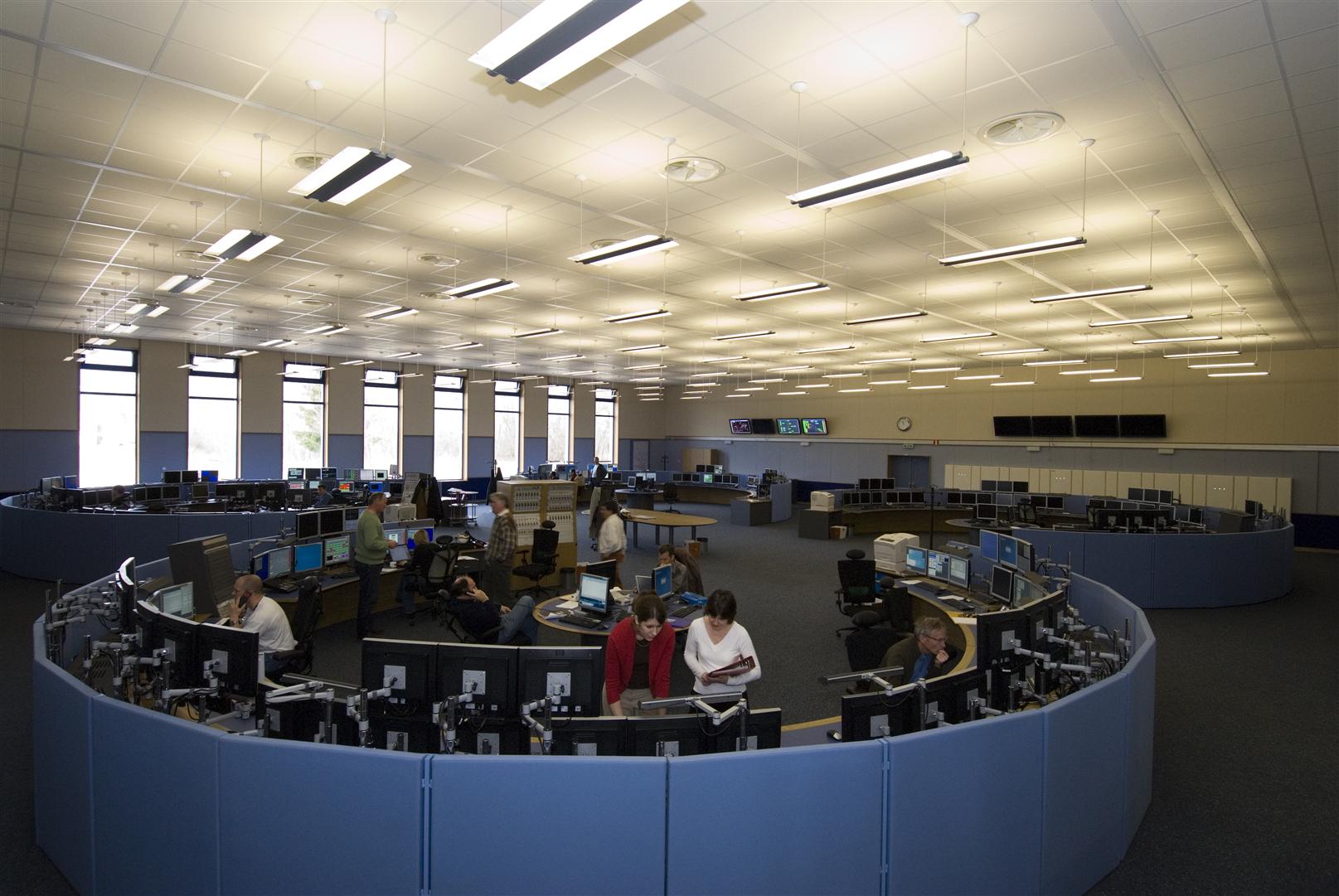The centre of the action
The CERN Control Centre (CCC) has all the ingredients of an action movie control room: hundreds of screens, technicians buzzing in and out, huge floor-to-ceiling windows revealing the looming vista of a mountain range, flashing lights, microphones… This is the place where not just the LHC, but the whole of CERN’s accelerator complex and technical support is based - truly the centre of the action at CERN.
Designed specifically with the LHC in mind, the CCC on the Prévessin site has been operational since February 2006. Before that there were three separate control rooms, one on the Meyrin site, another in Prévessin and a third for the technical infrastructure of CERN. Combining the control rooms not only benefited the LHC, but reduced the number of people needed to run the complex. The money saved was used to pay for it.
In the new CCC the three separate areas have come together in one room alongside the LHC control system, each with its own circular ‘island’ of computers and work stations. Paul Collier, Head of the Operations Group, explains the rationale behind the design: "Having everybody in the same control room we get a much closer level of communication between the teams running the various facilities, which is one of the best ways of ensuring the quality of the beam for the LHC." In fact, the new design is so efficient that the whole CCC can be run with just eight members of staff on shift at any one time.
As you might imagine, right now the CCC is an extremely dynamic environment. Fresh from the success of the recent synchronization test, and working towards the next one, the atmosphere is electric. Although only one of the four control ‘islands’ is dedicated to the LHC, the other three play a fundamental role in the machine’s success, as they determine the quality of the hadron beam that enters the machine. For example, the island controlling the Meyrin complex, including the PS, the Linacs and the booster synchrotron, is where the beam is created and where its transverse and longitudinal characteristics are determined.
Another island is responsible for, among other things, the SPS and the transfer lines. As far as the LHC is concerned this area takes the beam from the PS and transports it to the LHC at the right energy. The energy at which the SPS delivers the beam is all important as it determines what the strength the magnet field has to be to get the beam on to exactly the right trajectory inside the LHC.
James Ridewood, a SPS operations shift leader, gives an example of how he keeps track of all the different parameters of the beam using the control-room systems: "The curves on this screen show the magnets pulsing and the intensity of the beam. The backdrop of numbers relates to the protons hitting the targets in the North experimental area. We read these patterns, and from the shape of the curves, for example, we can instantly see what is happening in the SPS machine."
However, the place where everyone’s attention is focused is the LHC control island. There, the teams are building up to the process of ‘threading’ the beam through the entire machine on 10 September. As the beam goes around the machine, it can get little kicks from tiny errors in the magnets, which can cause the beam to slowly grow away from the centre of the vacuum chamber. Throughout the machine, corrector dipoles are installed close to the quadrupoles which focus the beams. "These correctors can be used to re-centre the beam at any point, using pickups to measure the beam position," says Paul.
Currently the LHC teams are doing mainly hardware commissioning in order to integrate the machine so that it all works together as a single unit. One LHC operations engineer-in-charge, Alick Macpherson, was working on the interface between the machine protection hardware and the control room operations when the Bulletin spoke to him: "I’m working on the interface to the LHC beam interlock system. If there is a problem with equipment or with the beam, the beam has to be dumped within a few hundred microseconds, and this means that a decision has to be made by the hardware. We have designed monitoring and control software so that we can deduce from the hardware exactly what happened inside the machine when a beam was dumped, and then control and correct that problem… In the end it’s a very big, complex machine, involving a lot of people and everything has to work in sync."
And perhaps this point illustrates where the CCC differs from an action film. When you consider the size, complexity, extent of collaboration and sheer vision of the LHC and the resources needed to control it you realise that it’s far more exciting than any blockbuster you’re likely to see this summer.


